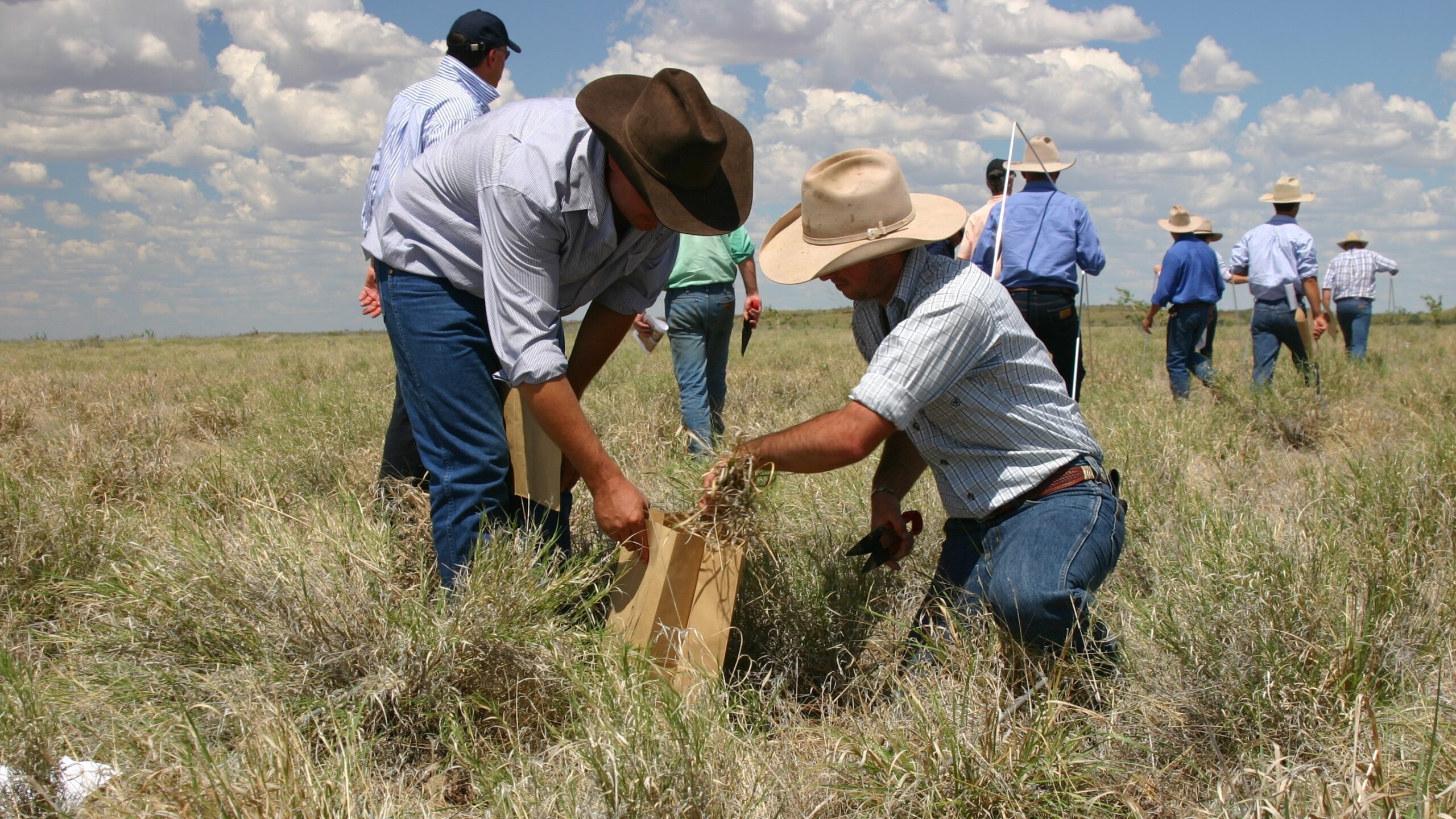What do 5 out of 5 beef extension officers recommend? Clue: it has something to do with your grass!
Written by Byrony Daniels, Beef Extension Officer, Department of Agriculture and Fisheries, Emerald.
What do five out of five beef extension officers say is the best thing a land manager can do? Pasture budgeting! OK so I made that statistic up, but I think it would be about right and here’s why.
Sometimes we’re called in at crisis time, little to no feed in the paddock, breeders in poor condition, energy and protein supplements expensive and unreliable in supply. We, the beef extension officer would much rather be called in now at pasture budgeting time to help. It is much easier to make a good decision for both budgets, the financial budget and the grass budget when the pressure is off.
Many producers will say they run an eye over their paddocks and are aware of how long their feed will last. However, if you’ve run out of feed in previous years, it may be time to formalise the activity and here is how.
Step 1: Estimate pasture yield

The easiest way to estimate pasture yield is to use the FutureBeef photo standards found here: Pasture photo standards.
We measure pasture in kg/ha of dry matter (kg/ha of DM)
Alternatively, you can cut and measure standing feed yourself using a 50cm x 50cm square quadrat, weighing and drying the sample to calculate a dry matter per hectare figure. If you need some guidance to do this, read this article: Dry season pasture budget: a guide for stocking rates.
Step 2: Accounting for the unpalatable species
Consider how much of the pasture will be useful to stock allowing for unpalatable species.
If 80% of the pasture is palatable species and we have 3000kg of dry matter estimated than we can estimate 80% of 3000kg = 2400kg DM is available palatable species.
Step 3: Utilisation
Estimate a utilisation figure to allow for pasture health, competition from other animals, return of organic matter to the soil and stock trampling.
Generally, we allow about 30 % utilisation for native pasture and 40 % utilisation for sown pastures. Please note when you are looking at grass in the paddock that utilisation is based on weight of the plant not height. If the 2400 kg available palatable species we have is native species, we can assume that 30% of it (720kg/ha of DM) is available for our stock.
Step 4: Estimate the budget period
This is from the end of effective rainfall in autumn to the start of effective rainfall in spring. Rainman, the CliMate app or the Bureau of Meteorology can be used to investigate these dates. Your local beef extension officer can help you do this and its worthwhile to do this because useful rainfall often comes later in the season than we think, we remember the good years! For this exercise let’s work from the end of May to the start of January, that is 241 days.
Step 5: Estimating intake
Estimate stock intakes considering size of the animal, digestibility of feed and stage of production (growing pregnant or lactating).
Young animals eat a higher percentage of their body weight than older animals do and as the digestibility of the feed declines so too does the animal’s intake of pasture. Lactating animals eat more too. On average cattle will eat 2.5–3% of body weight but their body weight will change over the course of a year so to estimate feed intakes, use adult equivalents.
Let’s assume for this exercise that we are running one to two year old steers who are rated as 1.03 of an adult equivalent in a moderate productivity zone. The adult equivalent table estimates one of these steers will eat 8.3kg of DM/head/day. The budget period is 241 days so we need 2000 kg of DM (8.3kg/hd DM x 241 days) to run one steer for the budget period.
Step 6: The budget!
We have estimated one hectare of land has grown 720kg of dry matter and that to run 1 steer for the budget period we need 2000kg of dry matter per head per dry season. Therefore, to run one steer for the full budget period we need 2.8ha (2000kg/ha / 720kg/ha). If we have a 100 ha paddock, we can run 35 steers (100ha/ 2.8ha) until the anticipated break in the season.
Those who go through a pasture budgeting exercise at the end of the “wet season” set themselves up for less stress, animals in better body condition, better conception rates next year and more marketable animals.
Grass is our cheapest feed resource. It is not often economical to substitute hay, grain, protein meal and molasses for grass; supplement maybe, substitute no!
It makes sense to be aware of how much feed we have in the paddock and how long it should last. It is better to be making decisions about which stock are the best to offload now than how are we going to keep them alive later.
It’s come to the time of year when we can no longer expect substantial pasture growth, so if you haven’t done yours already get pasture budgeting! If you need a hand getting it done contact your local beef extension officer. Repeated overgrazing of paddocks will lead to reduced ground cover, soil loss, water holding capacity loss, more weeds, less desirable pasture species, lower animal productivity and reduced business profitability.
The next step…
Other resources
Forage budgeting – a valuable tool for pasture management at Brian Pastures